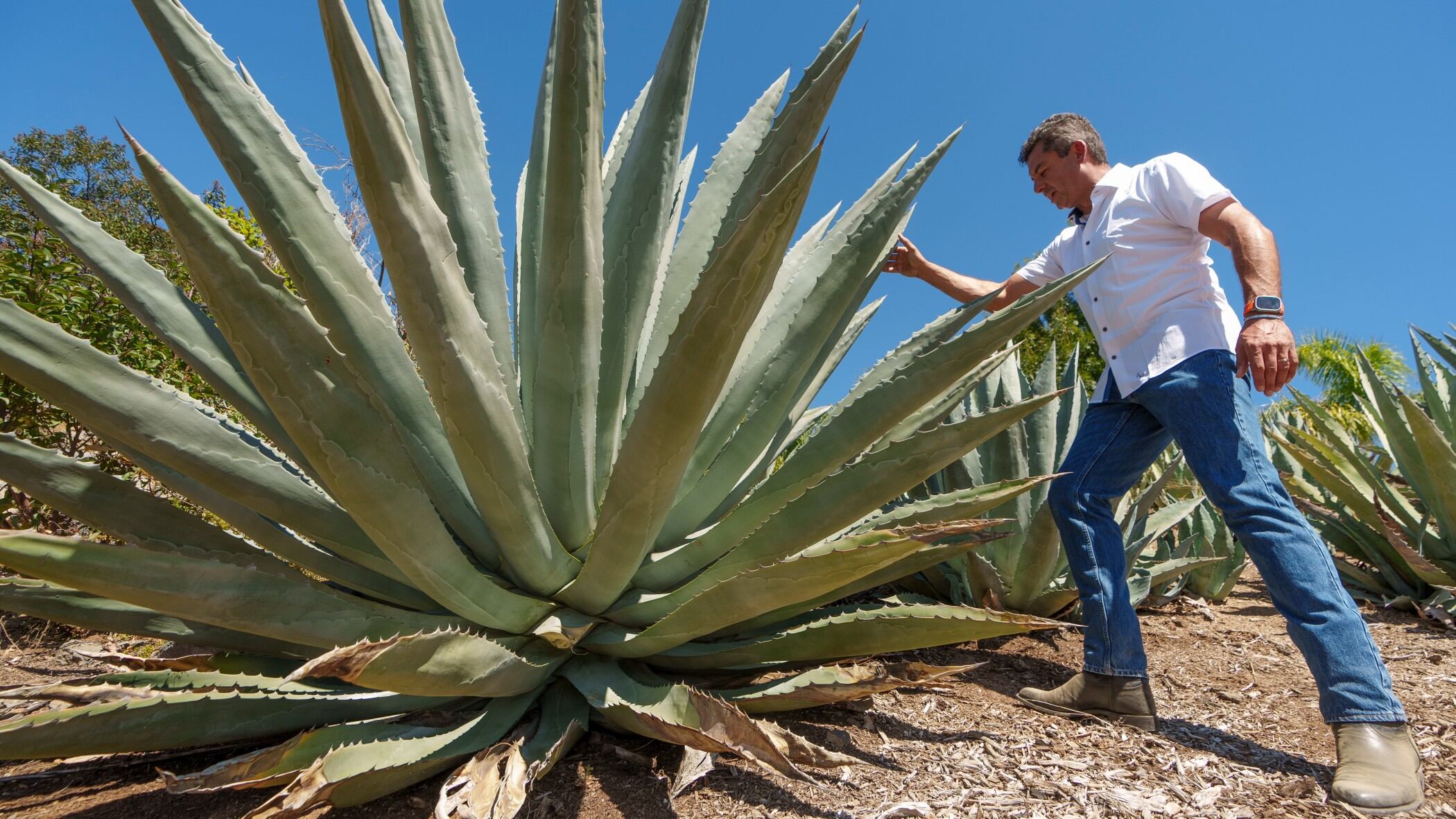By Amy Taxin
Leo Ortega started growing spiky blue agave plants on the arid hillsides around his Southern California home because his wife liked the way they looked.
A decade later, his property is now dotted with thousands of what he and others hope is a promising new crop for the state following years of punishing drought and a push to scale back on groundwater pumping.
The 49-year-old mechanical engineer is one of a growing number of Californians planting agave to be harvested and used to make spirits, much like the way tequila and mezcal are made in Mexico. The trend is fueled by the need to find hardy crops that don’t need much water and a booming appetite for premium alcoholic beverages since the COVID-19 pandemic.
It's attracted entrepreneurs such as Ortega, as well as some California farmers. They're seeking to shift to more water-efficient crops and irrigation methods to avoid fallowing their fields with looming limits on how much groundwater they can pump, as well as more extreme weather patterns anticipated with climate change. Agave, unlike most other crops, thrives on almost no water.
“When we were watering them, they didn’t really grow much, and the ones that weren’t watered were actually growing better,” Ortega said, walking past rows of the succulents.
He is now investing in a distillery after his initial batches of spirits, made from Agave americana, sold for $160 a bottle.
Consumers started spending more on high-quality spirits during the pandemic shutdowns, which spurred a rise in premium beverage products, said Erlinda A. Doherty, an agave spirits expert and consultant.
Tequila and mezcal were the second-fastest growing spirit category in the country in 2022, according to the Distilled Spirits Council of the United States.
Both are proprietary spirits under Mexican laws, which are recognized in U.S. trade agreements. Much like how champagne hails from a region of France, anything called tequila must contain at least 51% blue Weber agave and be distilled in Jalisco or a handful of other Mexican states. Mezcal can be made from a variety of agave types but must be produced in certain Mexican states.
Agave growers and distillers in California — as well as some in Texas and Arizona — are betting there is an appetite for more agave-based spirits even if they are produced outside of Mexico and not called tequila or mezcal.
“We seem to have this insatiable thirst for agave, so why not have a domestically grown supply?” Doherty said. “I am kind of bullish on it.”
Alfonso Mojica Navarro, director of the Mexican Chamber of the Tequila Industry, said tequila has a lengthy history, global reputation for excellence and close connection with Mexican culture. While he didn’t comment specifically on California’s foray into agave spirits, he said he believes Mexico can respond to the growing demand.
“The tequila industry is concerned that each time there are more players trying to take advantage of tequila’s success by producing agave spirits, liqueurs or other beverages that allude to the Mexican drink, its origins and characteristics despite not being the same,” he said in a statement.
Agave isn't grown on a large scale in California yet, and it would take years for that to happen. But spirits, made by cooking the plant's core to produce sugars that are fermented, are proving popular, said Ventura Spirits owner Henry Tarmy, who distilled his first batch five years ago.
“We’ve sold everything we’ve made,” he said.
Much like Mexico has, California is taking steps to protect its nascent industry. The state legislature enacted a law last year requiring “California agave spirits” be made solely with plants grown in the state and without additives.
A dozen growers and a handful of distillers also formed the California Agave Council last year, and the group has tripled in size since then, said Craig Reynolds, the founding director who planted agave in the Northern California community of Davis. He said those making agave spirits have a deep appreciation for Mexican tequila.
“We have about 45 member growers," he said. “All of them want more plants.”
Agave takes little water but presents other challenges. The plant typically takes at least seven years to grow and is tough to harvest, and a mature plant can weigh hundreds of pounds. Once cut, it has to be grown all over again.
Still, many see agave as a viable alternative as California — which supplies the bulk of the country’s produce — explores ways to cut back water use.
While record rain and snowfall over the winter mostly ended a three-year drought in California, more dry periods are likely in store. The state enacted a law nearly a decade ago to regulate the pumping of groundwater after excessive pumping led some residents' wells to run dry and the land to sink. Scientists expect extreme weather patterns will become even more common as the planet warms, causing more drought.
Stuart Woolf, who grows tomatoes and almonds in the state's crop-rich Central Valley, said he started thinking about agave after estimating he’ll only be able to farm about 60% of his land in 20 years due to water limitations. And that's despite investing in solar energy and groundwater recharge projects to protect the farm that has been in his family for generations.
After trying out a test plot a few years ago, Woolf went on to plant some 200,000 agave on land he otherwise would have fallowed. Each acre of agave is taking only 3 inches (7.6 centimeters) of water a year — a tenth of what row crops demand and even less than pistachio and almond trees, he said.
Woolf and his wife Lisa gave a $100,000 donation to the University of California, Davis, which formed a research fund to look at the succulent’s varieties and its potential as a low-water crop.
“I have been trying to figure out what is a crop that I can grow that is somewhat climate-resilient, drought-tolerant, so I can utilize our land,” Woolf said. “The amount of water I am giving them is so low, I don’t think I am ever going to have a problem.”













